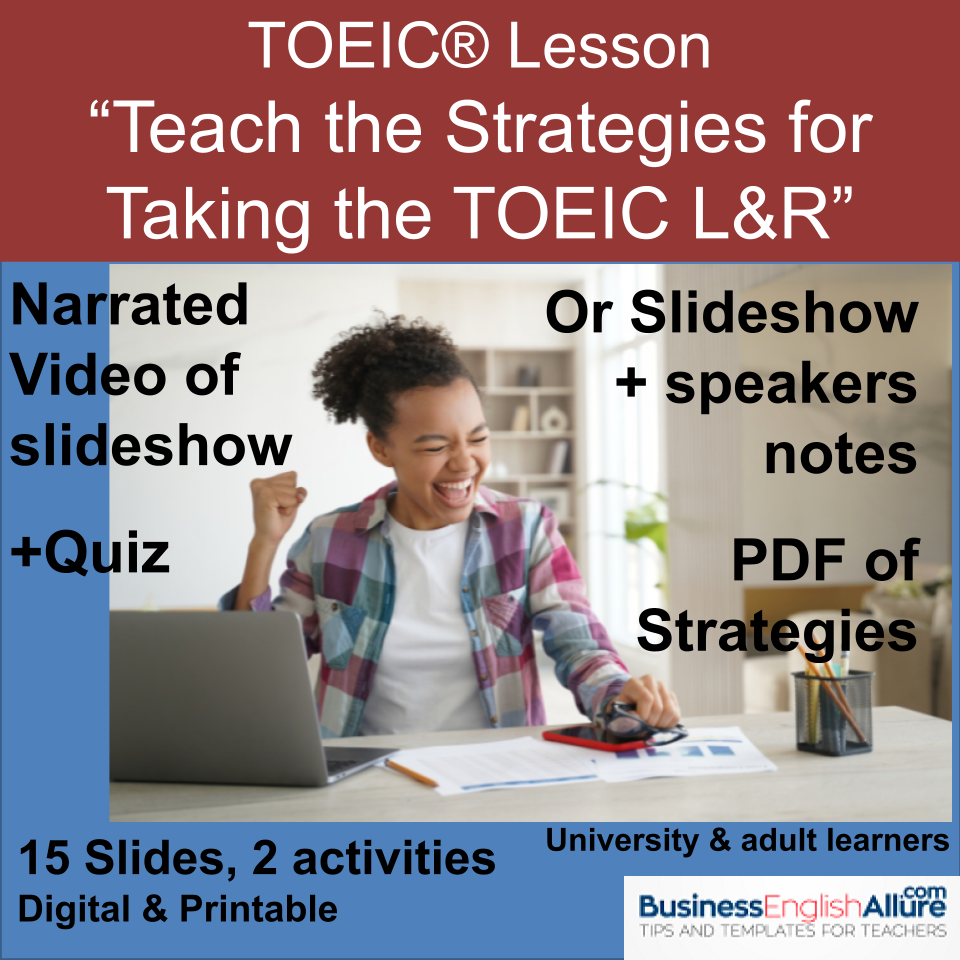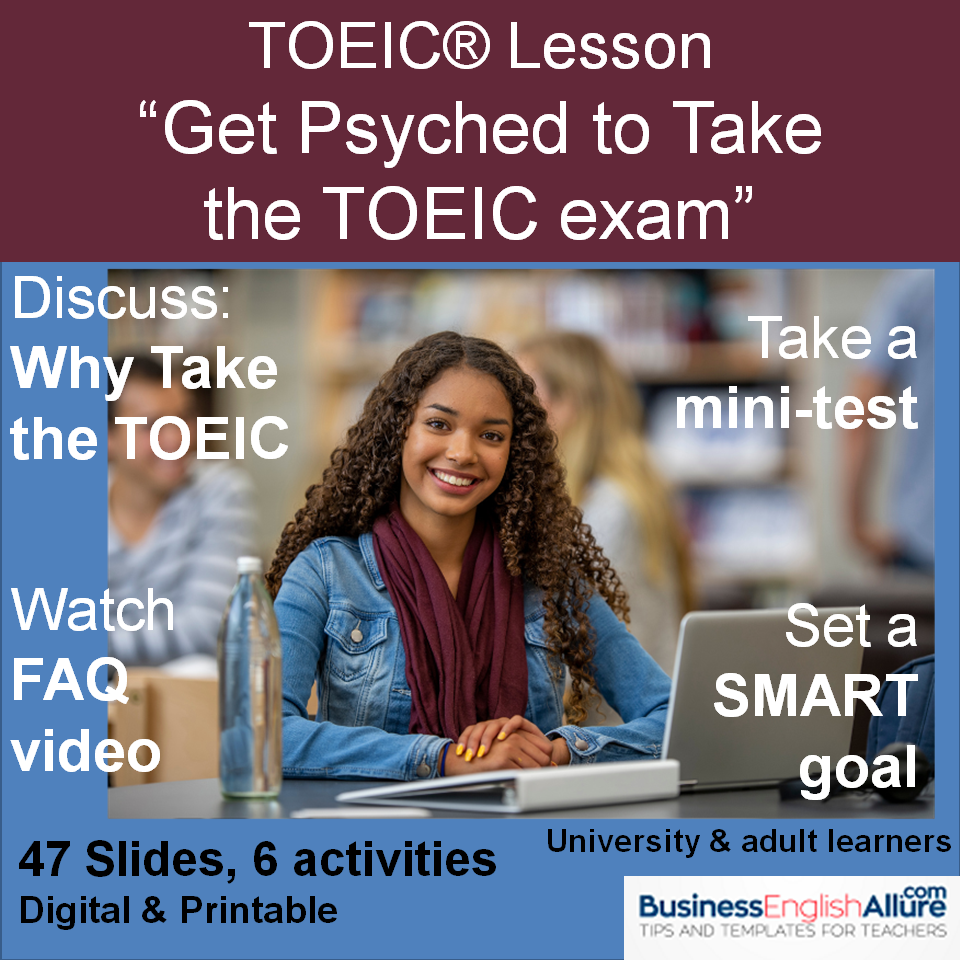Changes to EFL/ESL Today: Are you keeping up with the times?

Looking back over the past year, upended by the Covid19 pandemic, how much has changed for you as an EFL/ESL teacher? Have you shown courage and taken risks to adapt to online teaching or to modernize your existing online methods of teaching? Are you keeping up with the times and the changes to EFL today?
Admittedly, being semi-retired and out of the classroom had left me feeling sidelined and unqualified to call myself an EFL expert. I needed to catch up with the times too. I wanted to be “digitally literate”.
But new digital tools for teaching appear every day. It’s crazy! And it can be overwhelming. In the summer of 2020, I felt lost and unprepared for online teaching. I asked myself where do I begin? I started with learning about Zoom, then moved onto Google Classroom, interactive Google Slides, Google Forms, alternatives to making my own interactive slides such as PearDeck and Near Pod….
When I felt that I didn’t have the expertise necessary to write about the changes to EFL today, I sought out experts. I interviewed an expert in breakout rooms Uma Tademan in December 2020. Read my blog post and watch the interview here. Today we’ve got another expert in pedagogy Linda Piffeteau. Read about her later in this post.
Here’s a list of some free tools that I’ve looked over during the past year. How many of these have you experimented with or are planning to incorporate into your online and face-to-face classes? Let me know in the comments.
Download your free PDF with links to the videos and articles I studied.
Which EdTech tools have you added to your toolbox?
Have you….?
- Set up your class in Google Classroom to streamline assigning work and assessments, create a library of learning materials, reduce number of teacher/student emails
- Used breakout rooms for teamwork, practice time, collaboration
- sent out a poll in Zoom for feedback or contributing ideas
- Asked your students to use their mobile phones for research or games
- Converted worksheets to be interactive documents by overlaying text boxes (Google Slides, Google Docs, PowerPoint)
- Uploaded flashcard games to Quizlet, and Kahoot!, Quizziz or GimKit
- Suggested that your students to create the quizzes for the apps above
- Transformed matching activities into interactive drag-and-drop slides (NearPod, PearDeck, Flippity or WordWall)
- Used Google Forms for assessment and automatic grading with explanations
- Asked students to formulate their ideas and give feedback with audio and video recordings (FlipGrid, JamBoard)
- Checked to see if there was a library of existing activities in every EdTech app I use
- Offered choice boards where students can continue to learn with the media of their choice
- Proposed creating class website for your class projects (Google Sites, Microsoft365)
Should I make a demo video on any of the above ideas? Let me know in the comments.
Give yourself a pat on the back if you’ve incorporated some new digital tools into your repertoire. Are you curious to see how you measure up against other business English teachers?
What are other business English teachers doing in 2021?
I was so curious to know just how much, if at all, other business English teachers were experimenting with new technology in class that I sent out an “EdTech survey” to my subscribers and a couple of FaceBook groups in December of 2020.
I was a little disappointed that I got back only 25 responses but I realized that nobody likes to answer surveys so I should feel lucky with the response rate.
When I sent out my first survey I didn’t follow the standardized way of asking questions in order that the responses could be statistically analyzed. I want to give a shout-out to Ron Morrain (//www.syntaxsolutions.net/) who helped me rewrite my questions and answer choices. See below for the results in an infographic format.
EdTech survey results of 25 business English teachers
As an introduction, let me explain that of the 25 respondents, 95% were teaching at least some classes online. That’s almost everybody in December of 2020. Of those online classes, 78% were teaching one-on-one or small homogenous groups. Only 17% had large multi-level classes to deal with. The 5% of business English teachers who were spared transitioning to teaching online, use some EdTech tools in their face-to-face classes. So even offline, teachers use digital resources.
The smiley face next to the answer choice shows that I was pleased to see this result. Maybe you will be too. Give yourself a pat on the back.

How would you have answered these survey questions?
Why not make it your goal this year to become “digitally literate”?
You’ll be in a much better position to compete for jobs and assignments from your language school or book new students. And by continuing and expanding your use of technology in your language training classes you’ll keep your satisfied students coming back for more. Don’t forget to update your CV and LinkedIn profile with your tech skills.
How have language schools adapted to the pandemic?
We’ve asked Linda Piffeteau, an expert in EFL training, to fill us in on the transformation at the language school where she works as the pedagogic director. In this Zoom interview, she tells us about the changes to EFL she’s seen and what it means for the future.
You can watch the Zoom interview with Linda or read the accompanying article with more details on how EFL teachers and language schools have adapted and changed for the good.
Linda Piffeteau is director of pedagogy in the English Department of the Faculté des Metièrs near Paris, France where she oversees 60 EFL teachers on two sites. She’s qualified with a Master’s degree in Educational Psychology from the University of Cincinnati in Ohio and RSA diploma from London Unversity Paris. And she’s experienced having started teaching EFL in 1991 and being named pedagogic director in 2002. We can definitely call her an EFL expert.
She is lucky in that her language school is part of a national network called Centre d’Etude des Langues (CEL) with nearly 100 sites across France specializing in foreign language education. “This network of language centers is brilliant because between us we have small teams and I’ve been working on our platform in developing course materials,” Linda explains. Members from each CEL site have been working together for several years to create this online platform of shared teaching materials.
The language school provided emergency training
When the pandemic erupted in the Spring of 2020, most of the adult students enrolled in EFL training were working remotely. Fortunately, Linda’s teachers were already familiar with using ready-made digital materials from the platform in their “in-person” classes. She did have to scramble, however, to provide emergency training on how to use Zoom and Microsoft Teams. She also provided in-house training covering how to run breakout rooms and create digital documents, worksheets, and activities. Lucky teachers!
Managing change means spending time and money on training as well as nudging the unwilling to embrace the change.
According to this interview with Sophia Mavridi and Daniel Xerri on “The Effects of Covid19 on Language education” which skills are the most useful so teachers will be ready for the next day? Read about how adaptability is key to remaining flexible in the face of continuing change and how we need a growth mindset verses a fixed mindset.
There are benefits to the pandemic
“I think one of the benefits of the lockdown during the pandemic was that suddenly even the what you call ‘analogical teachers’ had no choice. It was either get with the plan or stay home and not teach.” These ‘digitally reluctant teachers’ had to be coaxed to get online. Admittedly, “That sounds terrible to say, but it has really helped us to move forward.”
The pandemic has caused us “To change the way we teach and the way we think about teaching especially within companies and with adults,” says Linda. “Now all of our courses are pretty much ‘blended’ in the sense that we work with online tools such as our platform but I think (in the future) we will be working sometimes in the classroom and sometimes remotely. That’s going to give a larger scope for students, especially adults who are working, to continue their lessons.”
Thanks to her response to the pandemic, her teaching staff will be ready to move forward with the changes to EFL and to meet the challenge of both in-person classes and remote learning.
Course content is specific to the student
Aside from the change over to online delivery of course content, other changes to EFL training have been in the making for a few years now. Today Linda says “It’s all about the student. It’s specific. No more pulling out the ole Headway book and turning the pages.” She gave the example of one student who worked for Renault Formula One and his teacher went looking for course content on Formula One racing with related videos, specific vocabulary, and articles. “Everything is geared for the student. That’s a big difference.”
The platform is full of varied content, but each teacher can supplement with her own class materials which she stores in her “space” on the platform. “That belongs to the teacher, but if she likes, she can share that content with the community. It’s very democratic,” Linda adds.
New follow-up exam measures English proficiency
Focusing on the specific needs of each student led to designing a language certification as a follow-up to a training session. The test called CLOE (Compétences Linguistiques Orales et Ecrites) tests both written and oral skills. In France, most training courses paid for by the government must be followed by a language proficiency exam.
The follow-up exam could be one of the various international proficiency exams like the TOEIC but it’s more expensive and very difficult which can be demotivating to the student. The advantage of CLOE is oral questions are specific to the profession of the test-taker. It can be performed at a distance with a teacher present during the written and oral. “That’s the thing that is so important, a teacher is present. You just can’t take the human element out,” says Linda.
Read more about the CEL in Evry here.
EFL students want to have a teacher
Every class at the CEL has a teacher, unlike the online schools which offer only e-learning or “Those virtual classrooms where you go in and you don’t know who’s there and you’re supposed to listen to the teacher talk. There’s no real follow-up or contact with a real person,” explained Linda.
“When the pandemic started, a lot of these online schools started to think that (the market) it’s all ours. We’re taking over. Language centers will never survive,” observed Linda. “Now what we’re seeing is that people are just tired of it. That’s why we’re really optimistic that face-to-face teaching is not going to die. People want to have a teacher.”
That’s so reassuring! Do you agree with Linda Piffeteau that teachers are not dead? How do you see the world of EFL/ESL in a few months? What will the new normal look like? Leave a comment we’re waiting to hear from you.
Other blog posts about staying up-to-date and personal development
Missing the teachers’ room where your colleagues shared ideas? Reach out and follow inspirational ESL/EFL teachers on social media. /follow-innovative-efl-teachers-social-media/
Have you heard of language coaches? Learn all about the new trade here and see if it might be for you. /whats-language-coaching-is-it-for-me/
I’m so happy you found me! Let’s stay in touch. Why not signup for my occasional newsletter? Or contact me directly at ellendubois@businessenglishallure.com.












Excellent article, Ellen!
Many insights & much advice, thank you.
Thank you, Andy! I had selfish motives for doing the research survey because I really wanted to know about my subscribers. Did they use EdTech, were they teaching 100% online…. The lockdown forced many ESL teachers to finally adapt to online teaching and using EdTech. The whole idea of language teaching changed and frankly, it was overwhelming for me to learn Zoom, Google Classroom, Google Slides, and all its AddOns. Was it overwhelming for you too?